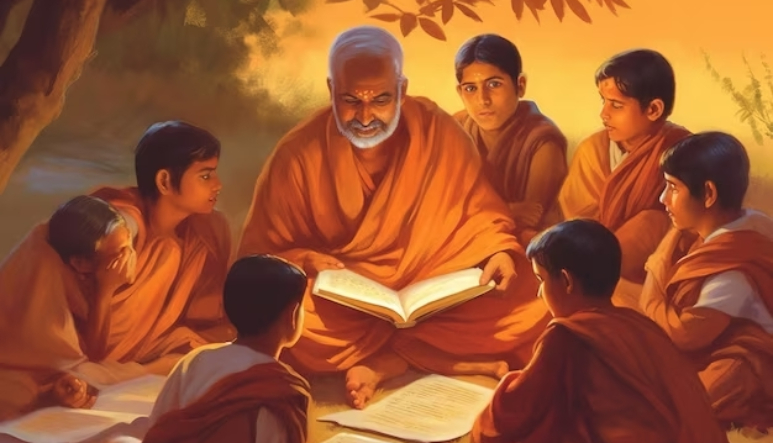Lifestyle plays a role of paramount importance in one’s life. You can learn about someone’s well-being, physical and emotional stabilities, and overall health, just by taking a glance at the individual’s lifestyle.
Of course, in this modern time, it is not an easy task to maintain a healthy lifestyle, thanks to all the distractions; be it the bad food, laziness, or other bad influences. But, in order to maintain good health, one needs a good way of living, a way that motivates to live in harmony with nature, a way that allows exploration of the deeper dimensions of life, a way that naturally shapes good emotional, physical, mental and spiritual well being. Well, one such way of life is the (as it was) Vedic way of living or the Vedic lifestyle.
In the present scenario, the most famous and widely famous teachings from the Vedic way of life are Yog and Ayurved. However, if we go further to understand and interpret these texts, we are likely to find a vast amount of knowledge on almost every aspect of life.
At Mystical Valley Farms, our goal is to live a vedic lifestyle.
There are four Vedas namely, the Rig-Veda, the Yajurveda, the Samaveda, and the Atharvaveda. The Vedas bring wisdom and integral knowledge covering all areas of life. The teachings of Vedas do not force anyone to comply with them, nor they classify anything as good or bad, but they do give knowledge about the ways in which the universe and nature work and the laws that govern their working.
The central idea of the vedic culture was of the oneness of the individual with nature. The individual is not different to nature. Nature is not an object to be used, but an idea to be revered. A river is not just a river, it became a devi, a luminous being, a mountain was not a mountain, it became a giriraj, a king, trees were not trees, they became devis and devatas. The connection with and appreciation of nature not as an object but as a personification of a higher power was an important concept of vedic times.
People of the vedic civilization realized that the whole of creation, the human body, all of nature and the universe are made from the five tattwas or elements – earth, water, fire, air and space. Different composition, permutation and combination of five elements give birth to a different creation. Some combinations become planets, stars and galaxies; some combinations become life forms, human beings, animals, insects and reptiles. It was the combination of the five elements which is the cause of everything that one experiences and perceives. These five elements have to be nurtured, protected and cared for. Life is ensured only if these five elements are maintained.
Respect for the five elements became the beginning of nature worship and animistic beliefs, and communication with nature happened through mantras. People found that they could communicate with trees, birds, insects and reptiles. Their communication was non-verbal; it was a mantra communication. Mantras became the medium through which nature used to be worshiped.
The idea of being able to communicate with the tattwas, the elements, and the forms of the elements is a vedic concept. Today scientists are experimenting with the effect of vibration, spandan, and are looking into the effect of words on water crystals. A drab-looking water crystal swells up and becomes big, shiny and bright when one says, “I love you.” Water that is abused, changes. Water that is praised, changes. Water is not even animate, sentient, conscious, yet response is there.
The vedic era evolved with the understanding that all is part of the same nature. Human life is interconnected with the cosmic existence and with the entire universe or multiverses. The concept of the unified field theory is a vedic concept. Scientists say that everyone is interconnected and dependent on each other for survival. For example, human beings are dependent on bees, for without the existence of bees human beings will be extinct. Each life form is depending on another life form to survive. Therefore, in the vedic civilization life was always considered to be precious. The question was how to protect and preserve life, and a routine was devised so that each individual could derive the best from life.

